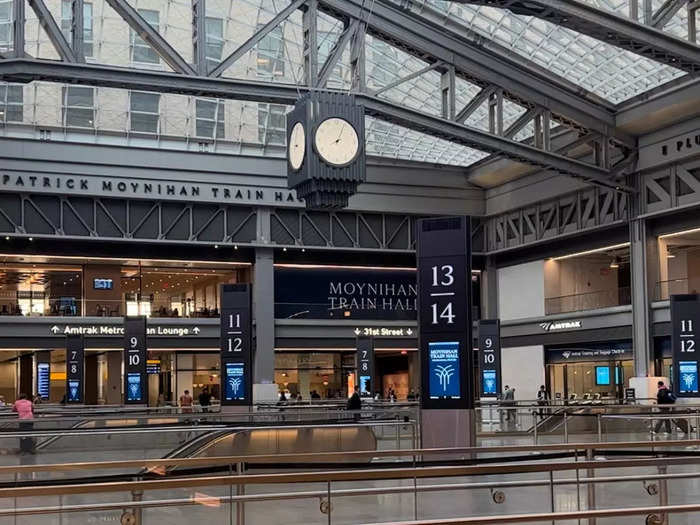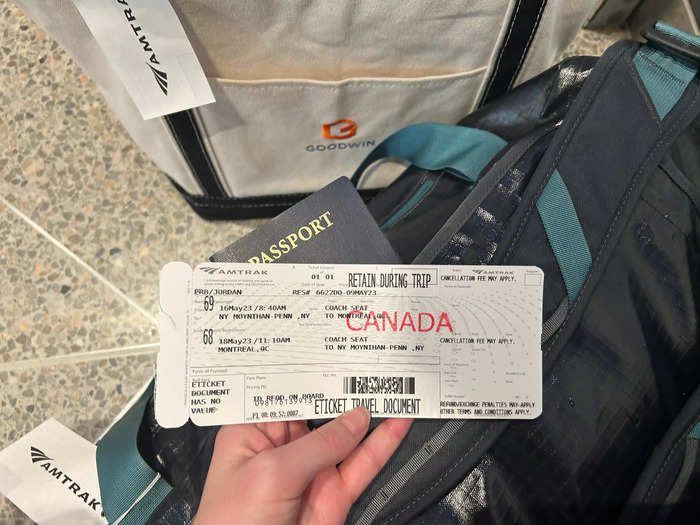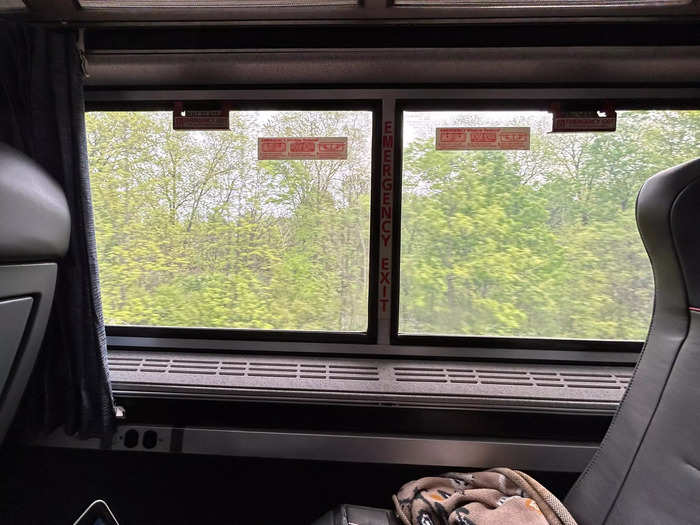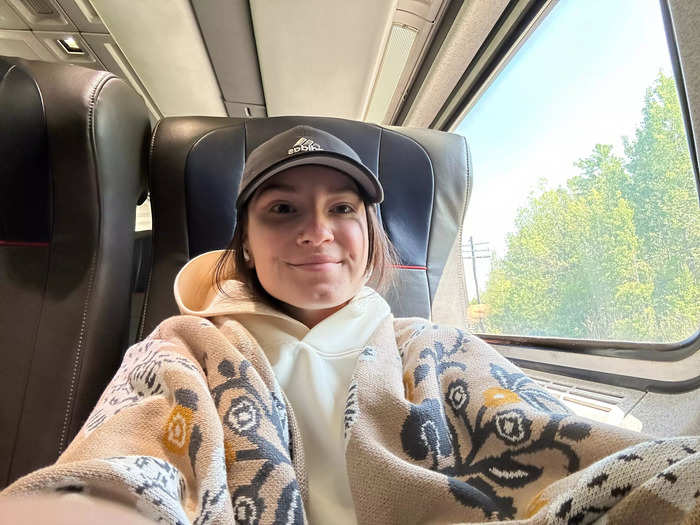Insider's reporter on the Amtrak train to Montreal.Jordan Parker Erb/Insider
- After closing in 2020, Amtrak fully resumed service on its Adirondack train in April.
- In May, I booked a ticket in coach on the train, which runs from New York City to Montreal.
In April, Amtrak resumed service between New York City and Montreal, marking the first time its Adirondack train has been fully operational since 2020.
The Adirondack train, which runs from New York's Penn Station to Montreal's Gare Central, takes passengers on a roughly 12-hour journey through the Hudson Valley, and drops them off in Canada in time for a late dinner or cocktail.
Earlier this year, in pursuit of a weekend getaway to Montreal, I booked a coach ticket on the half-day Adirondack train. From where to sit on the train to what to pack, here's my advice for travelers hoping to make the same trip.
If you're leaving from New York City, get to the train station earlier than you think you need to.
Amtrak's Adirondack train departs from Penn Station's Moynihan Train Hall. Jordan Parker Erb/Insider
Train travel doesn't follow the same two-hour guidance as is typically recommended by airlines, as Amtrak suggests arriving only 30 minutes before your train's scheduled departure.
But as a nervous traveler, I still arrived for my trip about 50 minutes before my train was scheduled to leave — and I'd recommend the same to anyone heading to Canada.
Canada-bound passengers need a physical boarding pass, which meant I had to navigate a few lines to get my ticket, then check-in for the ride. By the time I was done standing in lines, it was already time to board.
Had I not arrived early enough, I think there's a chance I could have missed the boarding call.
Keep your physical boarding pass and passport easily accessible at all times.
Passengers heading to Canada will need a physical ticket. Jordan Parker Erb/Insider
Throughout the check-in and boarding processes, passengers had to show their tickets to a number of different employees — some of whom appeared to get frustrated when people took too long to find their documents.
First, there was the check-in stand, where we had to show our passports and tickets to an employee. Then, as we got closer to the train, employees asked to see our tickets to direct us to the car we'd be riding in. Finally, as the train left the station, an attendant came by to check everyone's tickets.
To keep the process moving smoothly, have any necessary documents on hand (I kept mine in my belt bag).
Sit on the left side of the train as you leave New York City — but try to swap sides as you get closer to Canada.
The author's seat on the right side of the train. Jordan Parker Erb/Insider
As we got further from New York City, I realized I'd made a mistake by sitting on the right side of the train.
Passengers sitting on the left-hand side had stunning views of the Hudson River as we moved further upstate, whereas from my seat on the right, all I could see was thick foliage.
While I'd recommend sitting on the left side during the first few hours of the trip, I would suggest sitting on the right as the train moves closer to the Canadian border.
From my seat, I got to watch as Lake Champlain, a lake that straddles New York and Vermont and stretches into Canada, zipped by outside my window. The view of the lake was easily the highlight of my trip.
Packing your own food and water can save some money.
Bringing snacks helped Insider's reporter cut down on costs while traveling. Jordan Parker Erb/Insider
Even though I packed my own food, I was impressed by the prices of food on the train. Compared to airplane snacks, which can be exorbitantly expensive, I thought Amtrak's prices were fairly reasonable.
I did end up buying a few bottles of water when my own ran out, setting me back about $3 per bottle. I also brought a few of my own snacks but splurged on a $5 yogurt parfait midway through the ride.
Packing my own snacks kept me from buying full meals while aboard the train, and saved me a few bucks overall.
Finally, pack layers — and a blanket.
Packing a blanket helped Insider's reporter stay cozy on the train. Jordan Parker Erb/Insider
I tend to get chilly easily, so I layered a hoodie over a tank top and also brought a blanket for when the train started feeling a bit too cold for my liking.
It's another bulky thing to pack, but I found it helpful for napping during the trip and found it could be used as a pillow, too. Making space for a blanket in my luggage helped keep me cozy — which is an absolute must when it comes to a 12-hour train trip.





